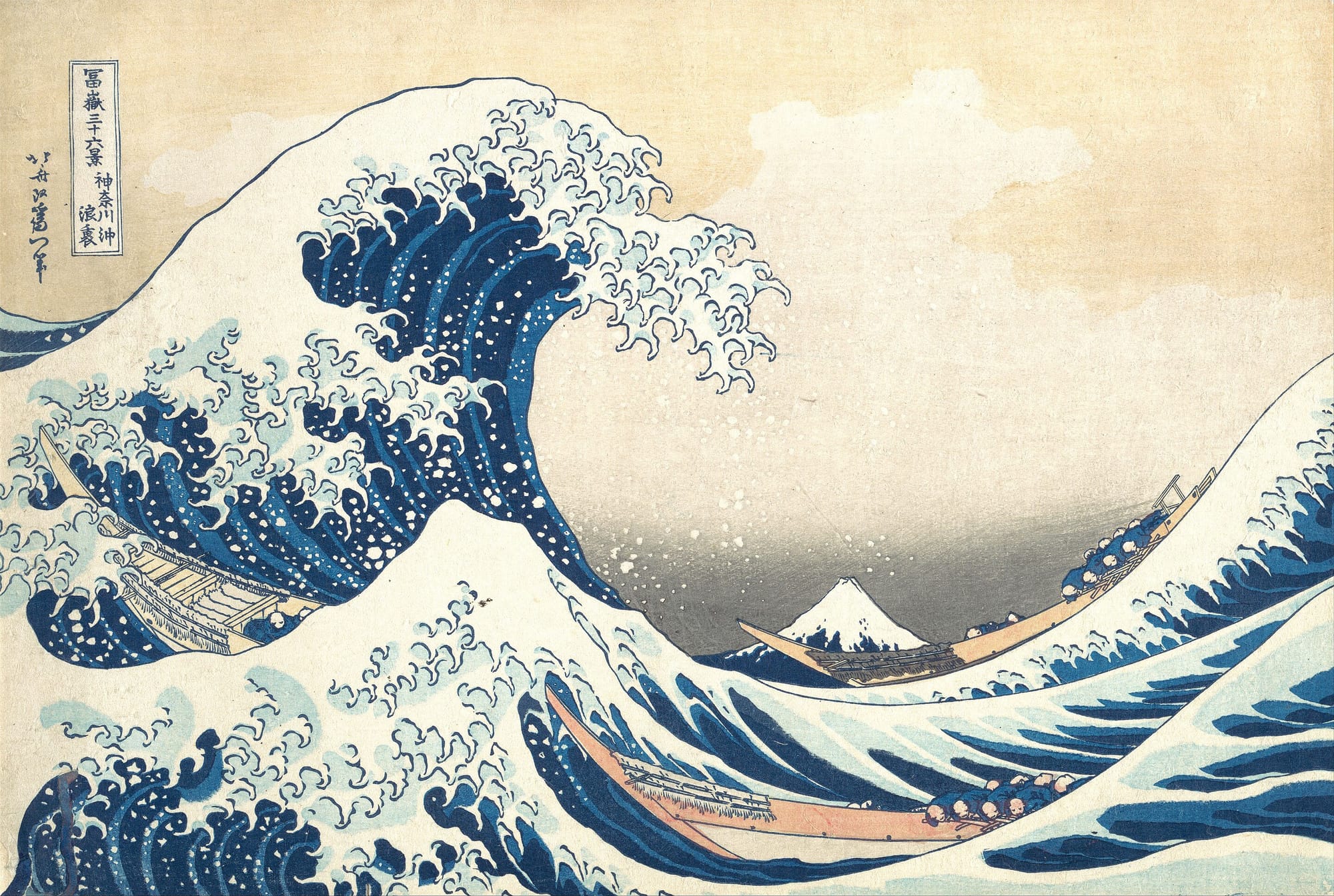Woodblocks and the Illusion of Simplicity
Technical Mastery: The Science Behind the Art
What made Japanese woodblock printing so remarkable wasn't just artistic vision—it was technological sophistication disguised as simple craft. The level of precision required staggers anyone who understands the process.

The Illusion of Simplicity
Korenberg's analysis reveals that distinguishing original prints from modern reproductions requires forensic attention to detail. Original impressions contain subtle imperfections that became signatures of authenticity—tiny wood slivers left by carvers, specific colour relationships that reproductions consistently get wrong, even the way certain blues appear under infrared light.
Forensics in Print
The prints also tell stories of their own creation through systematic damage patterns. As woodblocks wore down from repeated use, breaks appeared in predictable sequences. In The Great Wave, cartouche damage occurred in three distinct stages, allowing researchers to date impressions and track print runs. "Only three breaks were found to occur systematically in the cartouche," Korenberg notes, contradicting earlier scholarship that had identified 19 different damage states.
Crafting Change
Perhaps most remarkably, when blocks became too damaged, craftsmen carved entirely new ones. Late impressions of The Great Wave show completely different woodblocks for the light blue areas and yellow boat sections—maintaining production whilst subtly altering the image. Some prints even received new brownish-pink blocks for the boats, creating variants that collectors treasure today.
Collaboration Over Celebrity
The collaborative nature of these workshops was revolutionary. Unlike Western fine art traditions that celebrated individual genius, ukiyo-e embraced systematic teamwork: artists designed, carvers translated designs into wood, and printers brought everything together with their own interpretive choices about colour and pressure.
Why This Still Matters
In our digital age, when anyone can reproduce images infinitely and perfectly, there's something profound about these imperfect, handmade multiples. Each impression was unique—slightly different pressure, varying ink consistency, minor registration shifts—making every print both identical and individual.
Japanese woodblock printing proved that systematic reproduction didn't diminish artistic value; it amplified it. The techniques pioneered in Edo workshops anticipated everything from Warhol's Factory to contemporary digital art practices. They understood what we're still learning: that the most powerful art often comes from the intersection of technical innovation and creative vision.
The Real Revolution
When we look at The Great Wave today—probably the most recognisable image in art history—we're seeing not just Hokusai's genius, but the culmination of centuries of collaborative refinement. Every crisp line, every perfectly registered colour, every subtle gradation represents knowledge passed between generations of craftsmen who turned printmaking into an art form that could capture both the crash of waves and the pulse of an entire civilisation.
That's the real revolution of Japanese woodblock printing: it proved that technical mastery and artistic beauty weren't opposites, but partners in creating images that could travel the world and live forever.
Sources: Korenberg, C. "The making and evolution of Hokusai's Great Wave." British Museum Research Publication, December 2020.